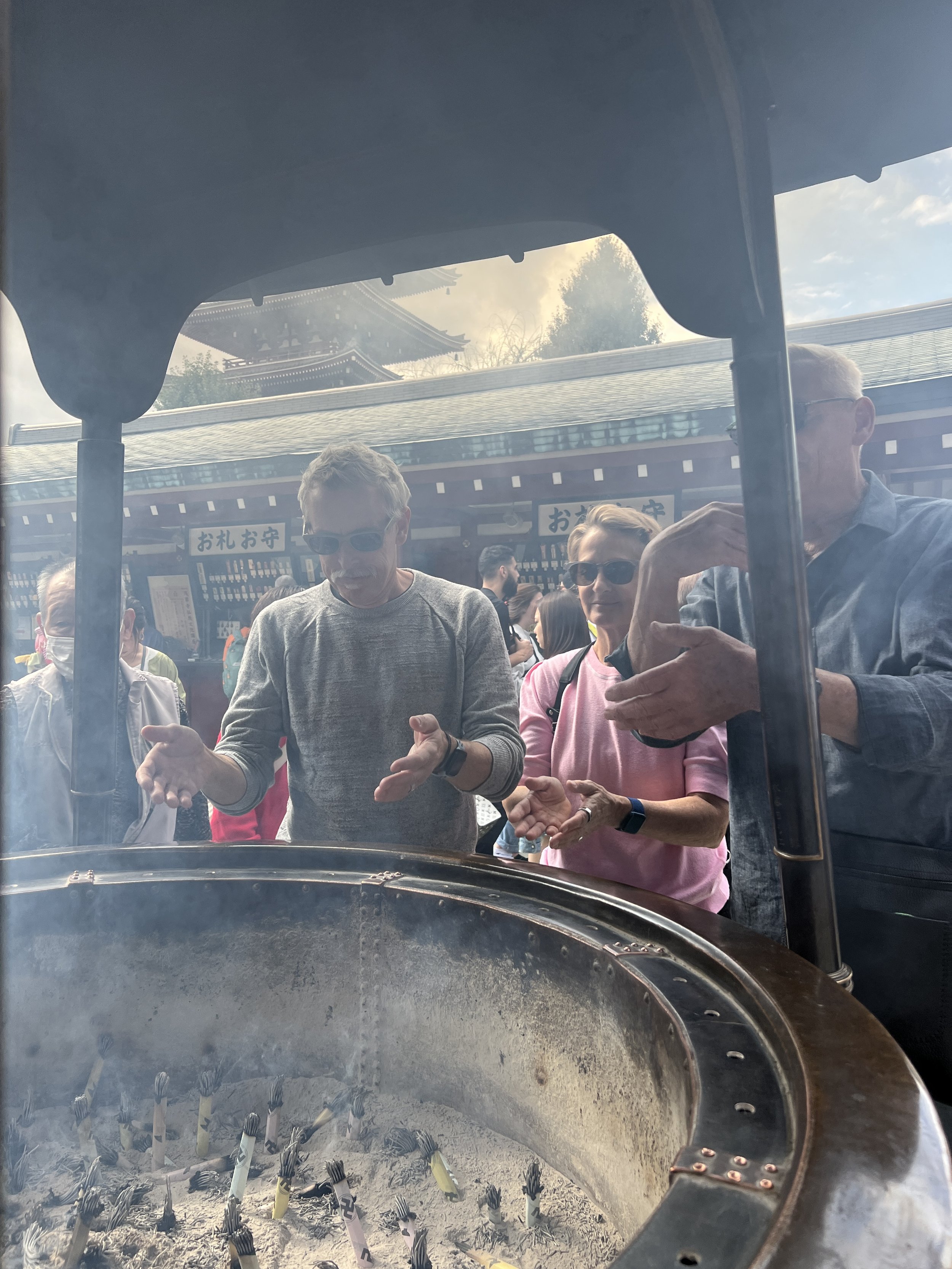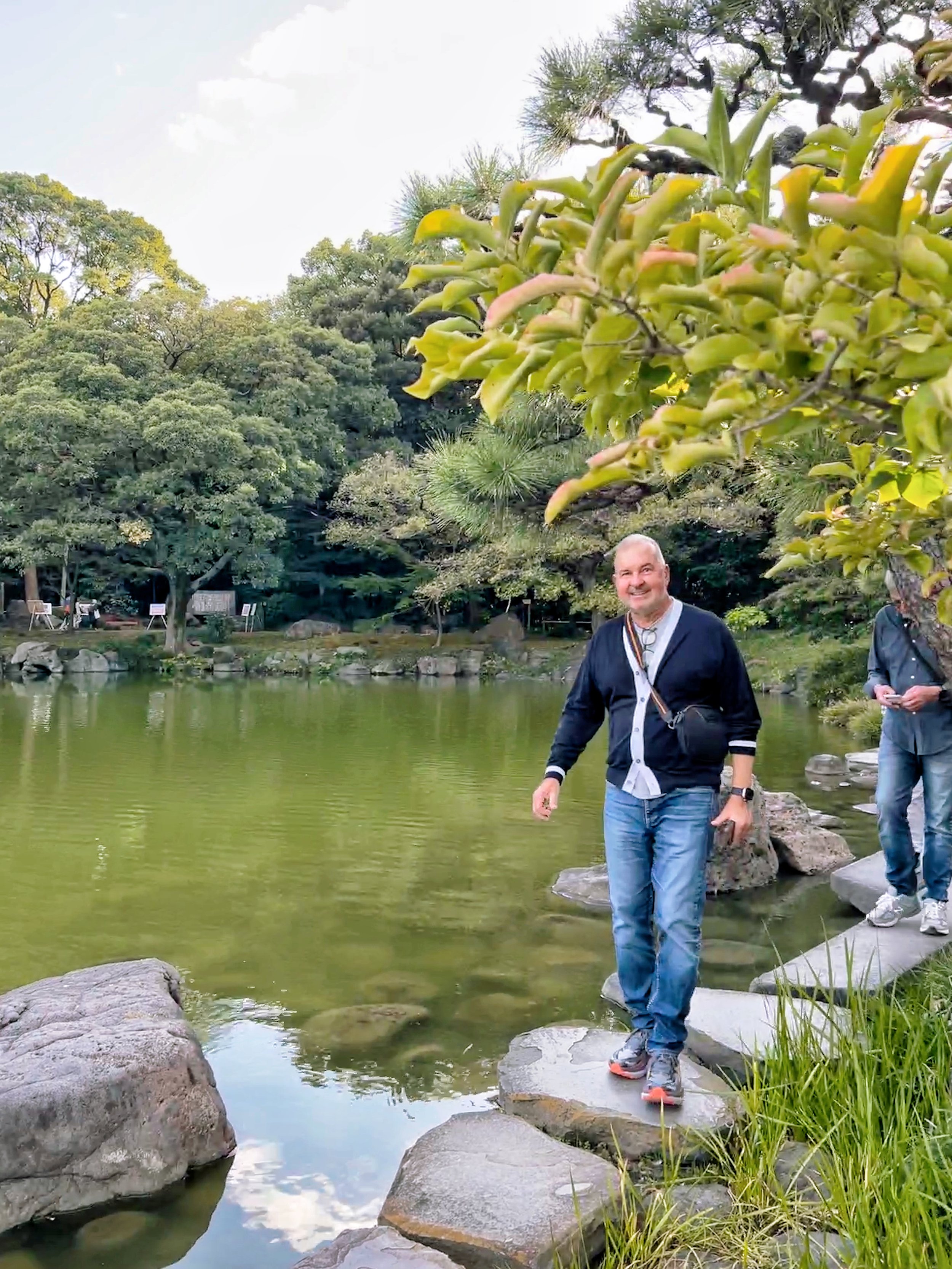Asakusa Tour: Hon no kimochi
This was my biggest tour group yet!
I normally take groups of 4 max, but I am so happy and relieved that everything went according to plan, even with a group of 6! We ordered a HI-ACE for the whole day from our trusted partners Airport Taxi. It was a group of six adults from the East Coast, U.S., and it was their first time exploring Tokyo.
The requested check list:
Traditional arts and crafts
Japanese garden
Ramen for lunch
Pigment Store
I made the perfect route and it went something like this:
We picked up the gang at their hotel. Then I gave them an assignment.
Me: “If there is anyone you want to tip because they gave you great service, tell them hon no kimochi and give them a snack from the bag.”
In Japanese, hon no kimochi means “a little something for you.” Americans show their appreciation through tips. Even if it’s 5 bucks or 20% of the bill, every dollar is appreciated.
In Japanese culture, handing money is awkward, so we give small snacks or gifts instead. It’s the thought that counts. Plus this will be THE Japanese phrase they will remember for the rest of their lives.
We are all artists
Asakusa is where Edo culture and traditional arts flourished. This is a perfect place for artists to get inspired! The gang was very much interested in glass, ceramics and painting. I figured starting the tour at Edo Taitō Traditional Crafts Museum would set the tone. We instantly clicked because we all had an art background.
Google Map: Edo Taitō Traditional Crafts Museum
Kappabashi “Kitchen Town”
Two of the members love cooking. I took them to Tokyo Bi Ken, where food sample props are for sale. Ever wonder how restaurants make the food samples? The plastic food made of wax, resin look so realistic, it triggers your appetite.
This is truly an art form in itself! These fake food plays a psychological trick on our minds.
Glen was intrigued by the lettuce.
Me: “What are you going to do with the lettuce?”
Glen: “I don’t know but I think I’m gonna get it!”
Significance of Daruma Doll
Daruma doll (figure on the apron) is a Japanese traditional doll modeled after Bodhidharma, the founder of the Zen tradition of Buddhism. Daruma is a symbol of endurance, happiness and luck.
A Daruma doll is also a self-reminder to keep you on track in accomplishing your goals.
When you buy a blank drama doll, draw one eye when setting a new goal. Then draw the other eye when you have completed the goal. This is a constant reminder to always strive hard.
MJ and her partner have bought a daruma doll a while back, and they mentioned they were able to fill in the second eye this year! They wanted a special souvenir to celebrate that win. Congrats! Wishing you more success!
Glen who loves ceramics and glass, came across Tsuchi-ya. He was intrigued by the Japanese Edo-kiriko glass carving technique, which originated during Edo Period. He found a special glassware.
I don’t know what’s going on, but Glen seem to have started a trend. My tour guests after this tour came here and got their own glassware to take home!
Google Map: TSUCHI-YA ガラスの器と工芸
Trips are meant to learn something new
MJ (the only girl in the group) arrived to Japan not knowing how to use chopsticks. We entered a chopsticks store on Kappabashi, and I showed her how easy it is to use it. She practiced using the beans in the store, and eventually figured it out. She bought a blue pair (her favorite color) to remember this day! Later for lunch, she was able to eat ramen with chopsticks like a pro. What a magical moment!
BEFORE
YAY! WELL DONE MJ!
AFTER
Entering Asakusa
The weather was so nice and warm. It was the perfect T-shirt weather during mid October.
Next, we hopped over to Kaminarimon “Thunder Gate” and through the crowds of Nakamise Shopping Street. We did the whole purification ritual of the incense smoke, washed our hands, tossed some coins, prayed at Sensoji Temple, bought some omamori lucky charms and pulled oracle fortunes at the same spot we filmed the “The Reluctant Traveler” since the gang were huge fans of the show.
The Best Cheap Ramen
I showed them how to order ramen from a vending machine, which is something they’ve never experienced. We all got a Shio ramen (salt broth) for 850 yen ($5.60 USD) and 4 bottles of Asahi beer for 400 yen ($2.65 USD per bottle). Shio ramen is my favorite and the egg noodles were nice and thick. The char siu was so soft and juicy and the broth came nice and hot. Our total bill was less than $50!! Coming from America, that is unheard of.
Kiyosumi Garden
Our second stop was Kiyosumi Garden, just 20 minutes away by car. Kiyosumi Garden opened to the public in 1932, it is famous for gathering refuge during an earthquake.
There is a gardener in the group, so he was very interested in Japanese gardens.
This is one of my favorite gardens because it feels so serene and peaceful. You can spot a crane if you’re lucky!
Fun fact: Western gardens focus on symmetry while Japanese gardens focus on flow.
There are turtles in the pond!
He is too hilarious!
Origami Time
Since they are all artists, let’s see if they can fold some paper.
We sat down at a nice picnic table in the back where I taught them how to make an origami heart and furoshiki wrapping. I hope they can take this idea and use it for dinner parties and gifts back home!
Pigment Store
This is every artist’s dream.
The visual merchandising at Pigment Tokyo is sensory overload… in a good way of course.
They offer good quality “made in Japan” water colors, brushes, postcards etc. They also have workshops as well.
Glen (below) was the one who wanted to stop by here, and he was beyond ecstatic. He bought a brush for his ceramic pieces.
It was a successful tour day and we ended the route by passing through Tokyo Tower on our way to drop off the gang at their hotel in Otemachi. Lots of hon no kimochi snacks were passed out throughout the day and everyone (both giver and receivers) were all happy! Ordinary tours would never do this btw!
We exchanged hugs and I had to hold myself back from tearing up because it meant sayonara (goodbye). I enjoyed listening to their life stories, advice, and adventures. Even though they are retired, they felt young and spicy!























